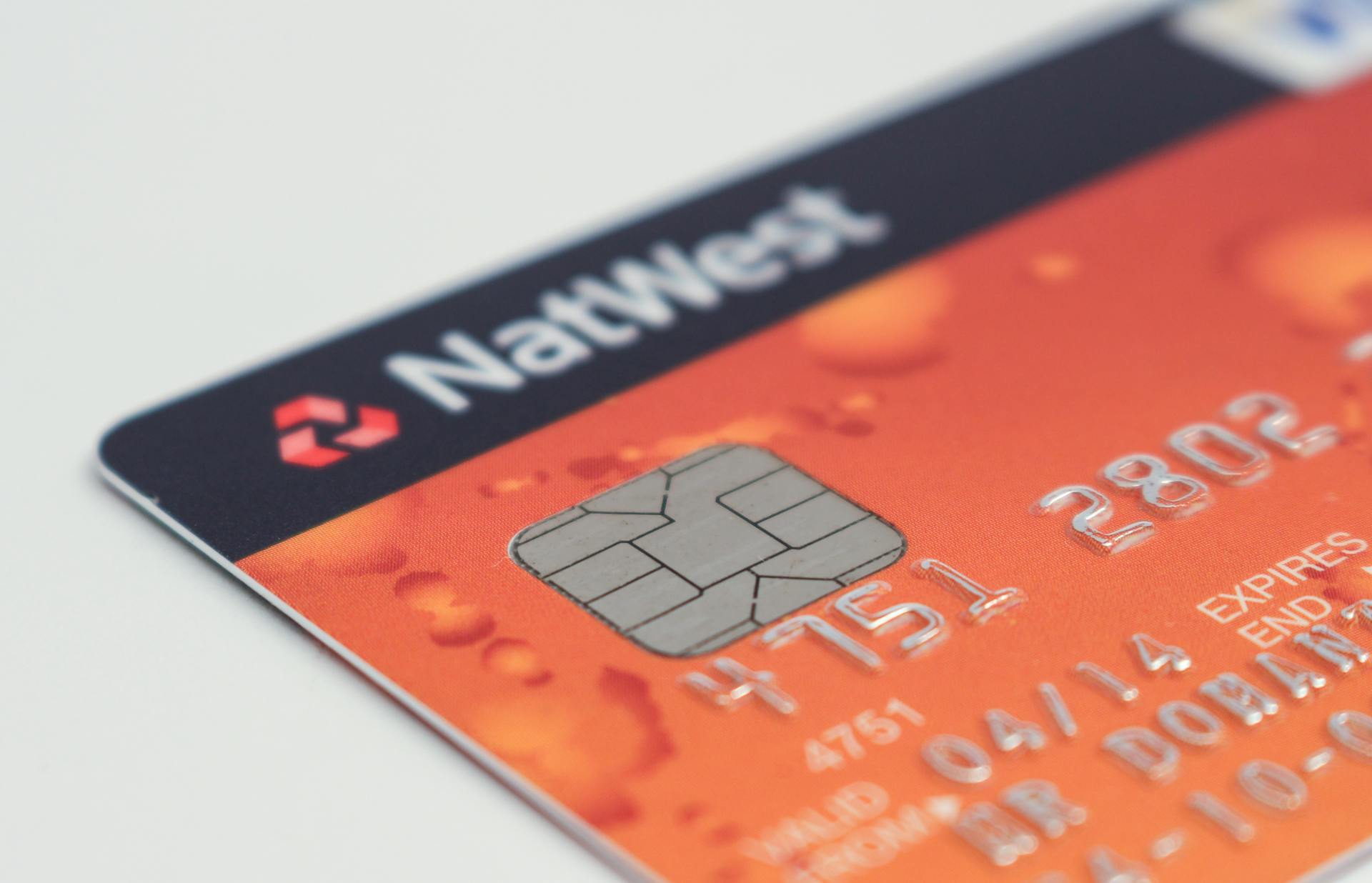
Credit card authorization forms are a crucial part of any business that accepts credit card payments. They help ensure that customers are aware of the payment terms and that merchants are complying with PCI security standards.
One common issue with credit card authorization forms is that they often don't include a clear expiration date for the authorization, which can lead to outdated forms being used. This can put businesses at risk of non-compliance.
In some cases, businesses may not provide a copy of the signed authorization form to the customer, which can make it difficult to resolve any disputes that may arise. This can also lead to issues with PCI compliance.
Merchants must ensure that credit card authorization forms are securely stored and disposed of properly to prevent data breaches.
You might like: Pci Compliant Credit Card Authorization Form
What is PCI Compliance?
PCI compliance is mandated by credit card companies to ensure the security of credit card transactions in the payments industry. This means that businesses have to follow specific technical and operational standards to secure and protect credit card data.
The Payment Card Industry Data Security Standards (PCI DSS) were created by the 5 largest credit card providers to regulate and protect information that travels through payment channels. This was done to reduce data breaches and protect consumers against credit card fraud and other issues.
To achieve PCI compliance, businesses have to follow specific requirements, which include securely accepting credit card payments, storing sensitive data involved in the transaction, securely processing the data, and transmitting the data between parties involved in a credit card transaction.
The 4 key areas of PCI compliance are:
- Securely accept credit card payments
- Store sensitive data involved in the transaction
- Securely process the data
- Transmit the data between parties involved in a credit card transaction
By following these guidelines, businesses can protect consumers and themselves from fraud or data breaches.
Benefits and Best Practices
To achieve PCI compliance, merchants can follow these best practices. Use a PCI-compliant vendor for payment processing, such as Square or PayPal, to ensure secure payment processing.
Working with a compliant provider can simplify the process for smaller businesses. PCI-compliant file sharing and storage services, like secure file transfer protocol, can also help streamline compliance.

Including training and education on compliance is crucial. A compliant business must have thorough, complete, and evolving education programs to support team members.
Regular security testing and monitoring are also essential. This includes continuous monitoring, vulnerability scanning, and penetration testing, with annual tests at a minimum to support compliance.
Here are some key best practices to keep in mind:
- Use a PCI-compliant vendor for payment processing.
- Use PCI-compliant file sharing and storage services.
- Include training and education on compliance.
- Maintain regular security testing and monitoring.
Compliance Costs and Penalties
Compliance costs can range from $1,000 to $50,000 per year, depending on the size of your business. This is a small price to pay for the security and trust that comes with PCI compliance.
Fines for non-compliance can be steep, ranging from $5,000 to $100,000 per month. This can add up quickly and may even lead to the loss of your ability to accept credit card payments.
To put this into perspective, consider that non-compliance can result in damage to your merchant account, making it difficult or expensive to continue accepting credit card payments. This can be a significant blow to any business.
Take a look at this: Global Payments Pci Compliance
The costs of non-compliance can be broken down into the following:
- Fines of between $5,000 and $100,000 per month for repeated violations
- Damage to your merchant account, making it difficult or expensive to continue accepting credit card payments
- Suspension or loss of payment processing
It's worth noting that these fines and penalties are not published or made public, but noncompliance can result in heavy fines and other consequences.
Becoming Compliant
To become PCI compliant, you'll need to determine your PCI level based on your total card transaction volume for the year. This will help you choose the right Self-Assessment Questionnaire (SAQ) to validate your compliance.
You'll need to fill out the SAQ and make the necessary changes to increase your data security. This may involve working with a data tokenization provider to store sensitive customer credit card information securely.
It's essential to maintain regular security testing and monitoring to ensure you're meeting the compliance requirements. This includes continuous monitoring, vulnerability scanning, and penetration testing.
To become compliant, you'll need to take the following steps:
- Determine your PCI level
- Fill out the SAQ
- Make the necessary changes
- Work with a data tokenization provider
- Complete an Attestation of Compliance (AOC)
- File with your banks or credit companies
By following these steps, you'll be on your way to becoming PCI compliant.
Security Measures

Security Measures are a crucial aspect of PCI compliance, and it's essential to understand the requirements to ensure your credit card authorization forms are secure.
To identify and classify security vulnerabilities, you must define and implement a process that relies on external sources. This includes deploying critical patches in a timely manner for operating systems, firewalls, routers, switches, application software, databases, and POS terminals.
You should also define and implement a development process that includes security requirements in all phases of development. This will help prevent vulnerabilities in physical and wireless networks that can be exploited by cybercriminals to steal card data.
To maintain secure systems, you must have a correct audit policy set and send logs to a centralized syslog server. These logs must be reviewed daily for anomalies and suspicious activities. Security Information and Event Monitoring (SIEM) tools can help log system and network activities and alert you to suspicious activity.
On a similar theme: Cyber Security Pci Compliance

It's also essential to regularly test security systems and processes to ensure security is maintained. This includes wireless analyzer scans, internal vulnerability scans, and application penetration tests.
To secure cardholder data, you must choose the right storage method or provider, which directly relates to how safe your customers' information will be. This includes encrypting card data when it's transmitted over open or public networks.
Here are some key security measures to keep in mind:
- Encrypt card data before transmitting it across public networks using secure transmission protocols like TLS or SSH.
- Deploy critical patches in a timely manner for all systems in the card data environment.
- Use a centralized syslog server to collect and review logs for anomalies and suspicious activities.
- Use Security Information and Event Monitoring (SIEM) tools to log system and network activities and alert you to suspicious activity.
- Regularly test security systems and processes, including wireless analyzer scans, internal vulnerability scans, and application penetration tests.
By implementing these security measures, you can ensure your credit card authorization forms are secure and compliant with PCI standards.
Access Control
Access control is a crucial aspect of PCI compliance. It's all about restricting access to cardholder data to only those who need it.
You must have a documented list of all users with their roles, who need to access card data environments. This list must contain each role's definition, current privilege level, expected privilege level, and data resources for each user to perform operations on card data.
Readers also liked: Pci Dss Level 4

Role-based access control (RBAC) grants access to card data and systems on a need-to-know basis. Access control systems, such as Active Directory or LDAP, must assess each request to prevent exposure of sensitive data.
To prevent data breaches, it's essential to limit data access to employees who absolutely need it. Allowing too many users to access card data can make it easy for breaches to occur.
You need to implement an access process that allows distinguishing between authorized visitors and employees. All removable or portable media containing cardholder data must be physically protected.
Regularly reviewing access logs is a great way to prevent data breaches or catch suspicious activities. An employee should review the logs regularly and check for any abnormal activities.
Access logs should be sent to a centralized Syslog server, and recordings or access logs of personnel movement should be retained for at least 90 days.
You might enjoy: Card Data Covered by Pci Dss Includes
Data Protection
Data Protection is a top priority when it comes to credit card authorization forms. PCI DSS Requirement 3 emphasizes the importance of protecting stored cardholder data.
Suggestion: First Data Pci Compliance

All stored cardholder data, including primary account numbers (PAN), must be encrypted using industry-accepted algorithms like AES-256 or RSA 2048.
Card data encryption is crucial, and a strong PCI DSS encryption key management process is also required.
Common locations where card data is found include log files, databases, spreadsheets, and other storage areas.
Cardholder data must be either encrypted, truncated, tokenized, or hashed, with algorithms like SHA 256 or PBKDF2 being acceptable methods.
Only the first six and last four digits of a primary account number should be displayed, with the remaining digits obscured for security reasons.
Security Policy and Procedures
Security Policy and Procedures are crucial for PCI compliance. Organizations must define and implement a process to identify and classify security vulnerabilities in their PCI DSS environment through reliable external sources.
To prevent exploits, critical patches must be deployed in a timely manner, and all systems in the card data environment must be patched, including operating systems, firewalls, routers, switches, application software, databases, and POS terminals. A development process that includes security requirements in all phases of development is also required.
Related reading: Pci Dss Information Security Policy

A security information and event monitoring (SIEM) tool can help log system and network activities, monitor logs, and alert of suspicious activity. Audit trail records must meet a certain standard, and time synchronization is required. Audit data must be secured and maintained for at least a year.
The following requirements must be met to ensure a secure workplace:
- Annual formal risk assessment
- User awareness training
- Employee background checks
- Incident management
Secure System Development and Maintenance
Secure System Development and Maintenance is crucial to preventing security breaches and maintaining credit card machine compliance. You must develop and maintain secure systems and applications, as required by PCI DSS.
To do this, you need to identify and classify security vulnerabilities in your environment through reliable external sources. Limit the potential for exploits by deploying critical patches in a timely manner. This includes patching all systems in the card data environment, such as operating systems, firewalls, routers, switches, application software, databases, and POS terminals.
You should also define and implement a development process that includes security requirements in all phases of development. This will help ensure that security is built into your systems and applications from the start.

In addition, you should set correct audit policies on all systems and send logs to a centralized syslog server. These logs must be reviewed at least daily to look for anomalies and suspicious activities.
Here are some key security measures to implement:
- Patching all systems in the card data environment
- Defining and implementing a development process with security requirements
- Setting correct audit policies and sending logs to a centralized syslog server
- Reviewing logs daily for anomalies and suspicious activities
Regular testing of security systems and processes is also essential. This includes wireless analyzer scans, external IP and domain scans, internal vulnerability scans, and application and network penetration tests. File monitoring is also necessary, with file comparisons performed each week to detect changes.
Information Security Policy for Personnel
Having an information security policy in place for your personnel is crucial to maintaining PCI compliance. This policy must be reviewed at least once a year and disseminated to all employees, vendors, and contractors.
The policy should address information security for all personnel, including employees, vendors, and contractors. It's essential to ensure that all relevant parties are aware of the security policies in place at the business.

A formal risk assessment must be conducted annually to identify critical assets, threats, and vulnerabilities. This assessment helps to identify areas where the security policy may need to be updated or improved.
User awareness training is also a critical component of the security policy. This training should be provided to all employees and relevant parties to ensure they understand the importance of information security.
Employee background checks are another important aspect of the security policy. This helps to ensure that only trusted individuals have access to sensitive information.
Incident management is a key part of the security policy. This includes procedures for handling security incidents, such as data breaches or system compromises.
Here is a summary of the key components of the information security policy for personnel:
- Annual formal risk assessment
- User awareness training
- Employee background checks
- Incident management
Certifications and Reporting
To ensure PCI compliance with credit card authorization forms, it's essential to have the right certifications and reporting in place.
Several certifications can help demonstrate compliance, such as PCI DSS Certification, CSA STAR Certification, HITRUST Certification, and ISO 27001 Certification. These certifications are all listed in the certifications and assessments section.

In addition to these certifications, regular assessments and reports can also help identify potential compliance issues. For example, a GDPR Assessment and a HIPAA Assessment can help ensure that credit card information is being handled in accordance with relevant regulations.
Here are some certifications and assessments to consider:
- PCI DSS Certification
- CSA STAR Certification
- HITRUST Certification
- ISO 27001 Certification
- GDPR Assessment
- HIPAA Assessment
What's New
PCI DSS 4.0 introduces significant changes to credit card compliance, emphasizing a more flexible and customized approach to security measures.
The updated standard allows organizations to tailor security measures based on their specific environments, giving them more control over their compliance process.
More rigorous testing procedures are now mandated, including vulnerability scanning and penetration testing, to ensure robust payment card compliance.
Businesses must stay abreast of these new guidelines to protect cardholder data effectively and avoid severe penalties associated with noncompliance.
Multi-factor authentication is now a key focus area, with PCI DSS 4.0 bolstering requirements for its implementation.
Continuous monitoring of systems is also emphasized, helping businesses to identify and address potential security threats more efficiently.
Encryption is another area of focus, with PCI DSS 4.0 highlighting its importance in protecting cardholder data.
A different take: Pci Dss 4
What Are Levels and Their Impact on Audits?
To determine the level of compliance a merchant needs to meet, the PCI Council considers the volume of transactions they process annually. This is a crucial factor in deciding whether a business must undergo a third-party audit or an internal audit.
Merchants at Level 4 process fewer than 20,000 transactions per year, making it the lowest level of compliance. Merchants at Level 1, on the other hand, process over 6 million transactions per year, requiring them to undergo third-party assessments from QSAs.
The PCI Council categorizes merchants into four levels based on their transaction volume: Level 4, Level 3, Level 2, and Level 1. Here's a breakdown of the transaction volume for each level:
Merchants at Levels 2, 3, and 4 can complete a self-assessment, along with a Self-Assessment Questionnaire.
What Are the 12?
The 12 requirements of PCI DSS are the foundation of compliance, and they're quite straightforward.
The first requirement is to use firewalls to protect against unauthorized access, which is a critical step in securing your IT perimeter.

Merchants and processors must implement and maintain firewalls as part of their compliance efforts.
The second requirement focuses on password protection, which includes secure identity and access management and/or secure access tools to control user interactions with infrastructure.
This includes protecting passwords and implementing formal role-based access control.
The third requirement is to protect cardholder data, which involves using encryption and cryptography to safeguard user data in transit and at rest.
Encryption is essential for protecting sensitive information, and merchants must encrypt payment information transmitted over networks.
The fourth requirement emphasizes the importance of encrypting transmitted data, which means never sending payment information to an unknown location.
The fifth requirement calls for the use of anti-malware software on payment devices, point-of-sale (POS) systems, or any infrastructure containing payment or customer information.
Regular updates to anti-malware software are crucial to ensure ongoing protection.
The sixth requirement mandates the regular updating of software, including firewalls, anti-malware, and other system software or firmware.
This helps prevent vulnerabilities and ensures that security controls are up-to-date.
The seventh requirement involves restricting data access, which includes logical restrictions against unauthorized access from outside the organization and segmented access internally.
This helps prevent unauthorized access to sensitive information.
The eighth requirement specifies that users accessing payment information must have a unique and secure ID for authentication, authorization, and monitoring.
This adds an extra layer of security to prevent unauthorized access.
The ninth requirement emphasizes the importance of restricting physical access to systems containing payment information, including securing data centers and workstations.
This helps prevent physical breaches and unauthorized access.
The tenth requirement calls for maintaining access logs, which involves tracking all user events, including data access, using logging tools.
This helps identify potential security issues and prevent unauthorized access.
The eleventh requirement involves implementing vulnerability scanning and penetration testing to identify weaknesses in security controls.
This helps prevent security breaches and ensures ongoing compliance.
The twelfth requirement emphasizes the importance of using documentation policies, including documenting policies and procedures around compliance, upgrades, and malfunctions.
This helps ensure that security controls are properly implemented and maintained.
Here are the 12 requirements of PCI DSS summarized in a table:
Certifications and Reports
Certifications and Reports are a crucial part of ensuring your business meets the necessary security standards. PCI DSS certification is one of the most well-known certifications in the industry.
There are several types of certifications and assessments that your business may need to undergo, including PCI DSS Certification, CSA STAR Certification, GDPR Assessment, HIPAA Assessment, HITRUST Certification, ISO 27001 Certification, FedRAMP and 3PAO Services, MARS-E Assessment, PCI SSF, P2PE Certification, and SOC2 Report.
Here are some of the key certifications and reports you may need to consider:
These certifications and reports can help you demonstrate your business's commitment to security and compliance, and can also help you identify areas for improvement.
Sources
- https://www.controlcase.com/what-are-the-12-requirements-of-pci-dss-compliance/
- https://www.kiteworks.com/risk-compliance-glossary/pci-dss/
- https://corp.sertifi.com/solutions/authorizations/
- https://www.uschamber.com/co/run/finance/credit-card-authorization-breakdown
- https://paymentcloudinc.com/blog/what-is-pci-compliance/
Featured Images: pexels.com

